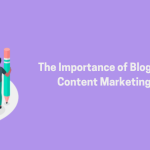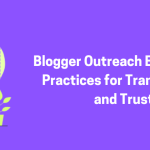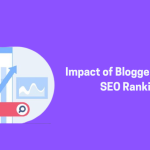Table Of Content
- 1 What Is Hyper Content Personalization?
- 2 The Importance Of Hyper Content Personalization
- 3 Key Elements Of Hyper-Content Personalization
- 4 Strategies For Implementing Hyper-Personalization
- 5 Challenges And Solutions Of Hyper-Personalization
- 6 Examples Of Successful Hyper-Personalization
- 7 Future Trends In Hyper-Personalization
- 8 Hyper-Personalization Is The Way To Go!
Hyper-personalization in content writing is like a rich, 1:1 conversation… like how you talk to your family or friends. It’s like sending a message on their birthdays.
You wish them, you talk about the memories both of you’ve been through, and then you express how important they are to you.
Hyper-personalization in content writing acts similarly, like a personal text.
You know what a particular customer has bought from you and which sections they have visited while browsing through your website. So, you send them a personalized mail or message, talking about how you have found something similar to what they might be interested in.
This piques your customer’s interest, and they come back to your website again to buy something they ignored before. That’s how convincing hyper-personalized content writing can be.
And your target audience doesn’t feel overwhelmed by it as well.
As a matter of fact, a report gathered by Porch Media suggests that 90% of people found hyper-personalization a perfect approach for brands to communicate.
Here is an example of the cycle hyper-personalization usually goes through.

Source: Deloitte
What Is Hyper Content Personalization?
Hyper personalization is about tailoring content experiences on a granular level using data-driven insights. For instance, the traditional approach to it involves using a person’s name and/or the location they currently live in. An excellent example of this would be –
“Hi John, check out our new arrivals!”
It’s simple and allows you to inform your audience about the new product you have launched.
However, hyper-personalization dives deeper into the context and responds to individual needs & preferences based on your consumers’ –
- Behavioral data.
- Real-time interactions.
- Purchase history.
An appropriate example of this approach would be –
“Hi John, we’ve seen that you LOVED our Linkin Park-themed t-shirts. So, we’ve handpicked some similar styles we know you’d love even more. Click here to check them out now!”
Hypercontent personalization is about speaking directly to a person’s unique buyer persona, behavior, and interests. Here is an infographic that can help you differentiate between hyper-personalization and traditional personalization better:

The Importance Of Hyper Content Personalization
Hypercontent personalization is about not taking your target audience for granted. For this, you must choose a segmented approach with targeted messaging to persuade your users and lead to a happy and healthy conversion. Here’s how personalized content writing services can benefit your business in return:
A: Improve User Experience

An Example of How Starbucks Uses Hyper-Personalization. (source: Wedia-Group)
Hyper-personalization can transform user experience by presenting relevant content at the right time. Such coveted personalized experiences can make consumers feel valued and make them engage with your brand even more.
B: Increase Conversion Rates
When content resonates on an individual level, it naturally drives conversions.
For example, Amazon’s recommendation engine, which suggests products based on browsing and purchase history, has been attributed to a significant share of its revenue.

Amazon’s Usage of Recommendation Technique.
Hyper-personalization taps into similar tactics, tailoring each touchpoint to drive action.
C: Competitive Advantage
As a more targeted customer-centric approach, hyper-content personalization can also provide an unparalleled competitive edge to your brand. By going beyond standard personalization practices, your brand can differentiate itself and establish customer loyalty.
Remember, every modern customer expects more relevant and targeted interaction. So, if you’re considering convincing them, hyper-personalization would be the perfect choice.
Key Elements Of Hyper-Content Personalization
A: Data Collection And Analysis
Data is the backbone of hyper-personalization. If you want to know more about your audiences, it’s essential to collect information about them from –
- On-site actions.
- Social media behavior.
- Purchase history.
You can use tools like heatmaps, Google Analytics, and customer surveys to gather information and get a nuanced view of individual preferences.
B: AI And Machine Learning
Machine learning and AI can help you analyze data on a massive scale. So, you can use them to identify customers’ buying patterns and predict their future behaviors.
With AI, you can offer real-time recommendations, such as product suggestions based on the user’s browsing history. On the other hand, machine learning improves your personalization engine and helps it adapt to ever-changing user behaviors.
C: Real-Time Personalization
Real-time personalization ensures that your target audience receives relevant content as they browse your website. For example, if a user frequently checks out a certain category, it’s important to display those items prominently through ads and mail.
While this is a highly dynamic approach, it helps you maximize the sense of relevancy for them without making them feel annoyed.
Strategies For Implementing Hyper-Personalization
In practice, there are countless ways to apply hyper-personalization in your marketing efforts. However, most large businesses focus on four main approaches to achieve this.
These include:
A: Content Customization
Hyper-personalization content writing services are all about tailoring your content for each segment by using data-driven insights. For example, if you are running a fitness brand, you can send tailored exercise plans to your customers based on their –
- Fitness level
- Body weight
- Goals
- Past interactions

Source: Diana Mykhailova
Content customization can help build a strong connection with your customers, as they receive valuable, targeted information instead of generic messages.
B: Segmentation
By categorizing your audience based on age, location, purchasing behavior, or interests, you can target each segment with customized content writing. Segmentation enables you to understand and serve unique needs, ensuring messages resonate with each group.
C: Dynamic Content
Writing dynamic content allows you to display various versions of content to different users. But in this case, your writing will be based on their –
- Location or demographics.
- Time of visiting your website.
- The type of device they are using.
For example, if you are running a news website, you can showcase sports content to one user and political articles to another based on their browsing history. This helps you offer a seamless and relevant experience for every visitor.
Challenges And Solutions Of Hyper-Personalization
Although hyper-content personalization is a new yet proven strategy, it still has some pitfalls you must avoid. For example –
A: Data Privacy Concerns
Hyper-personalization relies heavily on your research and the data you gather. In some cases, this may lead to privacy concerns, especially if you don’t follow a proper safety protocol.
Solution: When you are collecting data from your users, be sure to closely follow regulations like CCPA and GDPR. Also, be responsible and transparent to users regarding how and why you are gathering their data. Offering opt-in choices and clear data policies can also be helpful here.
B: Technical Challenges
Implementing hyper-personalization requires significant technological resources. For example, business owners need to use –
- AI for research and data collection purposes.
- Data analytics platforms for proper data analysis.
Solution: Partnering with an experienced content marketing agency can be ideal for you for two reasons. Firstly, they have all the tools you’ll require to hyper-personalize your content. So, there is no need to purchase anything on your part. Secondly, they also come with years of experience. That means, if you hire them, you won’t have to involve yourself in the nitty-gritty at all.
C: Scalability
Scaling your hyper-personalization strategy can gradually become more complicated as your audience grows. This might not bode well for a smaller organization that does not have a decent workforce to begin with.
Solution: Automation will be vital to managing increased data flow and ensuring consistent personalization. With this technology, you can set up automated workflows to finish the processes faster and achieve higher TAT.
Also, with machine learning, you can maintain personalization at scale while improving the research and data collection processes.
Examples Of Successful Hyper-Personalization
Engagement is key.
And to achieve this, almost every brand out there is trying to hyper-personalize their content. Here are a few successful examples of the same –
A: Netflix
When you open a new Netflix account, the app asks you to choose between a few movie and web series genres. Once you decide, the platform will create a “Suggested for You” section to help you find what you want.

An example of how Netflix personalizes content for a user.
By analyzing viewer behavior, Netflix customizes the homepage for every user, which has been instrumental in keeping users engaged and subscribed.
B: Spotify
Spotify’s ‘Daylist’ is another standout in hyper-personalization.

Daylist: Spotify’s Way to Personalize Content for You
By analyzing user listening habits, Spotify generates daily playlists tailored to individual tastes, resulting in high engagement and user satisfaction.
Future Trends In Hyper-Personalization
Technologies like blockchain and predictive analytics will transform how we personalize customer experiences. For example, predictive analysis can help you anticipate what a user might need when visiting your website.
Blockchain, on the other hand, can address the glaring privacy concerns your website or the way you collect your data might have. It can also provide users with more control over their data.
Predictions
In the future, hyper-personalization will become more refined, with real-time adaptation based on behavioral cues and micro-interactions. We may also see the approach integrated with AR & VR to provide an immersive content experience tailored to your users.
Hyper-Personalization Is The Way To Go!
Hyper-personalization will be the next frontier in content writing because it caters to individual users and their preferences.
So, no matter what kind of business you run, we’ll encourage you to explore different hyper-content personalization strategies to create tailored content for your customers. If you want to know more about it or need help with hyper-personalizing your content, BO is here to help.
Book a meeting with us today and let us guide you along the way.









